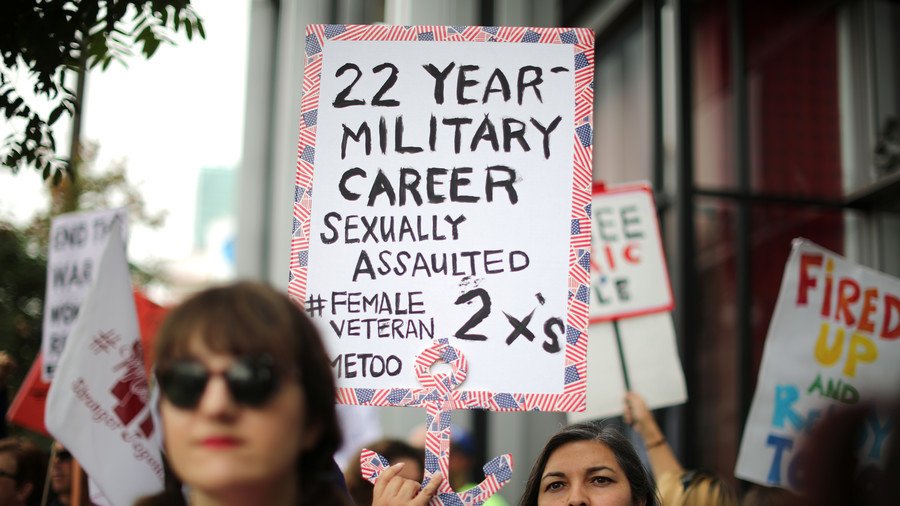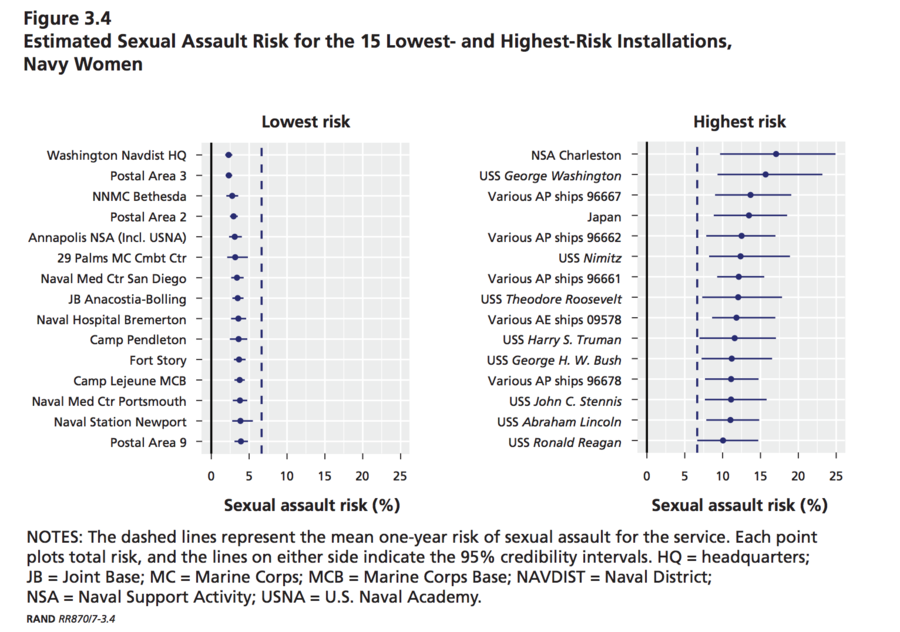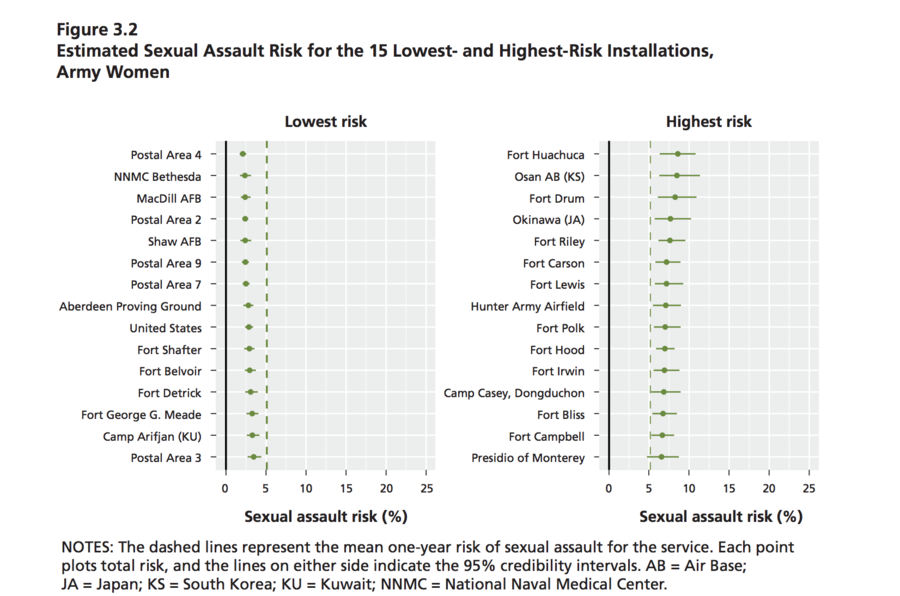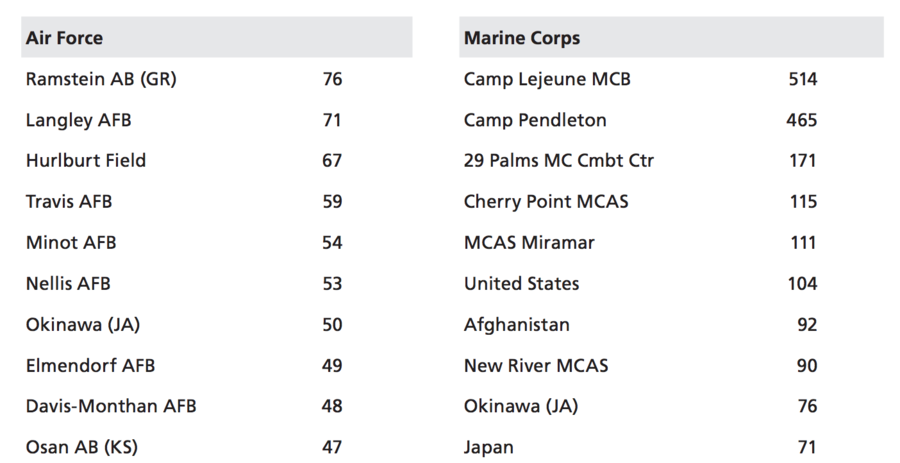US Navy ships & training bases exposed as ‘highest risk’ in military sex assault report

Young female service members, especially navy sailors, face the highest risk of sexual assault among all the branches of the US armed forces, the Pentagon’s RAND Corporation study reveals, having ranked all military installations.
Back in the summer of 2014, RAND conducted a survey of the sexual assault and sexual harassment experiences of some 170,000 members of the US armed forces. After months of delay of the report by the Pentagon, due to questions regarding the methodology, on Friday the survey was finally released to the public.
Producing a four-year-old snapshot of the sexual misconduct allegations across all branches of US armed forces, authors pointed out that female personnel onboard naval carriers face the highest danger levels.
Navy
“The highest-risk installation has an estimated one-year sexual assault risk of 17.1 percent for women in the Navy,” the report says, noting that ships in general “dominate the highest-risk installations.” Thirteen out of 15 highest-risk naval installations were ships or clusters of ships, including eight of the ten aircraft carriers. “Our model estimates that more than 10 percent of all women experienced a sexual assault at each of these high-risk installations over a one-year period, and more than 15 percent of all women were assaulted at two of them,” RAND discovered.

The Naval Support Activity Charleston was found to the be the most dangerous place, with “one in six women assigned to duty” there experiencing a sexual assault in 2014, followed by the USS George Washington with slightly over a 15 percent rate of attacks.
Be less masculine: Report tells military sexual harassment undermines combat readiness
US vessels also seem to be a risky place for male sailors, although they face sexual assault at a much lower rate. “More than 2.5 percent of men were assaulted on all of the ships in the highest-risk list,” the report said. An exception was one ship where “one in every 25 men” were sexually assaulted, the study said, without clarifying which vessel.
Air Force
Out of all branches, female US soldiers face the lowest risk of potential sexual assault in the Air Force, with an overall average rate of 3.1 percent. The highest-risk installations for women in 2014 were Vance, Oklahoma, Laughlin Texas, and Altus, Oklahoma. “The five highest-risk bases for Air Force women are all Air Education and Training Command bases, with the top three focused on undergraduate pilot training,” the study said. Men also feel more secure across the Air Force, with the highest sexual assault risk of about 0.5 percent at Altus base in Oklahoma.
Army
Compared to females, male soldiers also relatively at low risk in the army, with a one-to-two percent risk factor present at overseas bases, in Italy, Germany, and South Korea. “All of the highest-risk bases for women in the Army are associated with higher risk of sexual assault than the average for women at large Army installations,” the report said. These installations include large US, Japanese, and South Korean bases and two installations with large training programs in Fort Huachuca and the Presidio of Monterey, where an assault rate between five and 10 percent was registered.

Marine Corps
In the Marine Corps, female personnel face roughly a 10 percent risk at Air Station Yuma in Arizona, Air Ground Combat Center Twentynine Palms in California, and Air Station Beaufort in South Carolina. For male Marines, the highest risk factor of one-to-two percent was recorded at bases in Japan and South Korea. Most reports of sexual assaults against marines in 2014 were recorded in Camp Lejeune, North Carolina, with 514 offenses against both male and female recruits, followed by Camp Pendleton in California, with 465 registered incidents.

The Pentagon had repeatedly delayed the release of the report, fearing that the findings might influence new recruits’ willingness to join, or their choice of military branch. After the Pentagon received an updated draft of the probe on July 24, it demanded that RAND explain and defend the ‘methodology’ used in their research, prior to any release of the assessment.
The published findings offer a “valuable first look” for the Pentagon to estimate the sexual assault risk posed to its service members, the DoD said. “Given some of the limitations of the study, additional work must be done to explore the factors driving the results,” Maj. Carla Gleason, a Pentagon spokeswoman, was quoted as saying by Stars and Stripes.
“Sexual assault is a horrible crime that ultimately reduces force readiness and lethality,” she added, in a separate commentary.
While the Pentagon somewhat brushed aside RAND’s conclusions, a non-profit dedicated to fighting sexual assault of women in the military urged the Pentagon, and the Navy in particular, to apply extra effort to protect female soldiers.
“The Navy needs to acknowledge that ships require extra effort to prevent sexual assault and to deal with its aftermath,” director of government relations at SWAN non-profit told Vice. “Senior Navy leaders should use this data when they make command selection decisions moving forward. Navy commanders who commanded highly problematic ships should not be promoted or given even greater responsibilities.”
If you like this story, share it with a friend!















